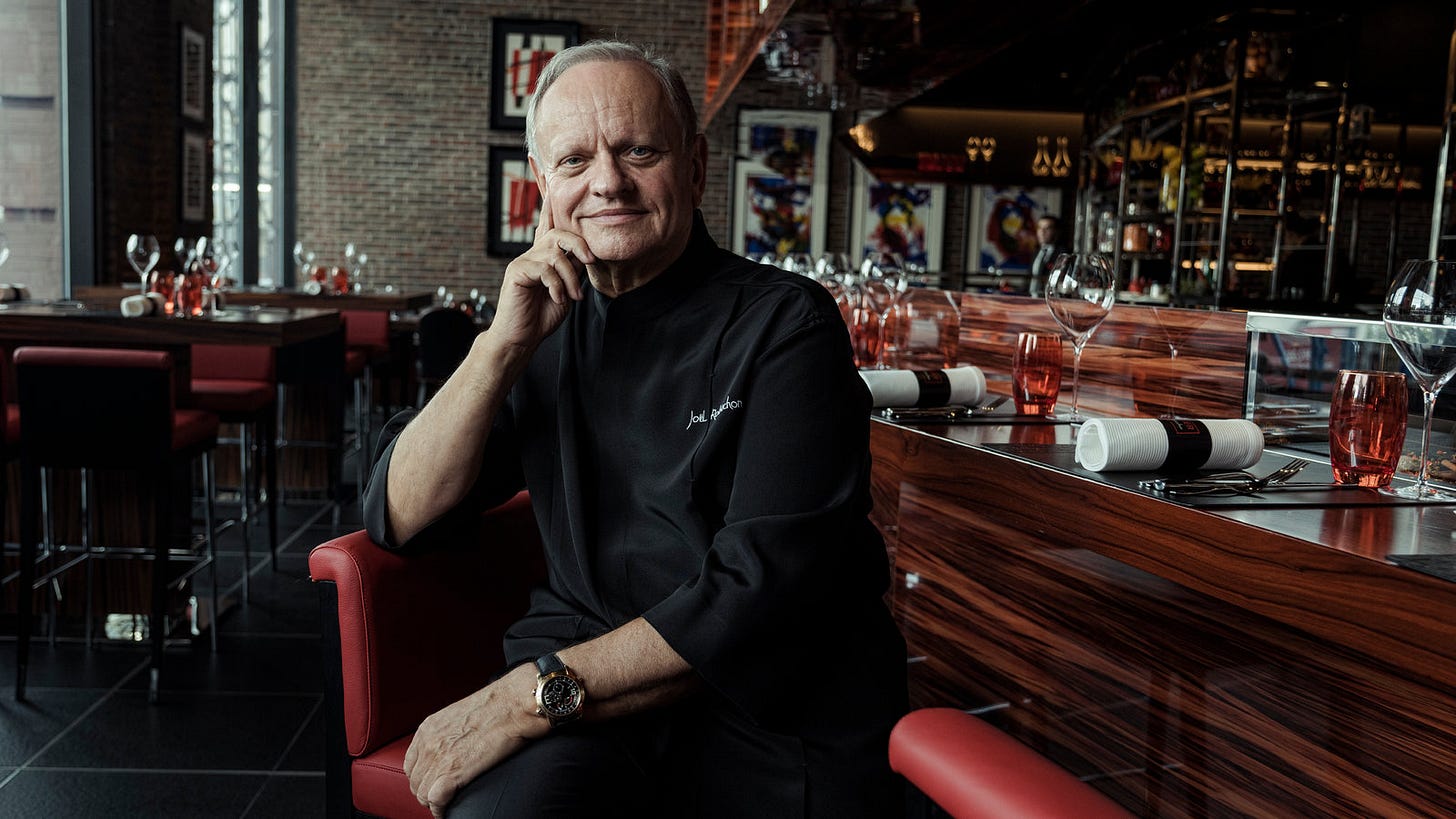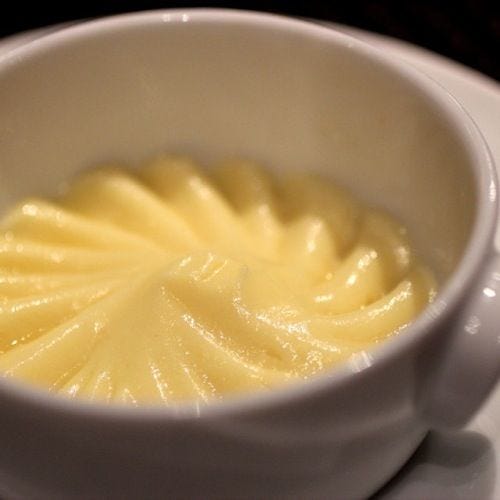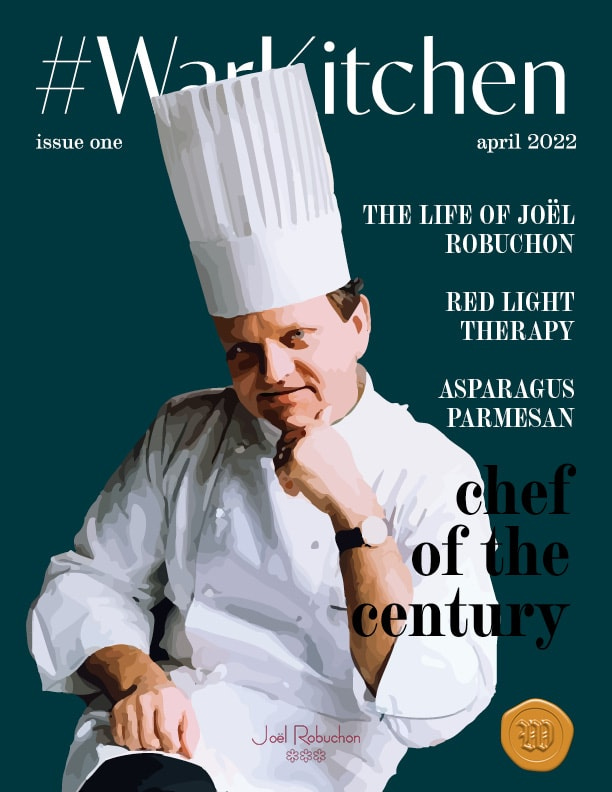The Life of Joël Robuchon
Chef of the Century
Joël Robuchon was a world-renowned French master chef and restaurateur who was awarded “Chef of the Century” by Gault Millau in 1989 and Meilleur Ouvrier de France in 1976. He was the chef with the most number of Michelin stars to his name — 32.
Chef of the century. That’s a title you don’t hear all too often. Joël Robuchon was one of the greatest chefs of his generation. Not only does he have the most Michelin stars ever, he also achieved the Meilleur Ouvrier de France, which is one of the highest honours a chef can attain.
Meals Are Sacred
Robuchon grew up in a traditional French family and always appreciated the ceremonial baking practices in the Catholic faith. He was in awe of how food was always blessed before consumption and so he wanted to be a priest. Food was sacred for him, even at a young age. He began helping out in the kitchen as a boy and before he knew it, he realised his true purpose, which was to master the culinary arts. He left the seminary in his teens and went straight into perfecting his craft.
The boy from Poitiers embarked on a journey that would see him go from being like any other French kid growing up in a low-income household in post-war France to one of the greatest chefs of all time.
Robuchon’s Come Up
Robuchon began his culinary journey like many other French chefs, starting from the bottom in the brigade de cuisine. He quickly rose through the ranks, from aide pâtissier (assistant pastry chef), to chef de cuisine (head chef), and by the age of 29, he was running the kitchens at the Concorde Lafayette, managing a team of 90. He then took over the kitchen at the Nikko hotel and earned two Michelin stars.
The Rise of Jamin
Five years after winning the prestigious Meilleur Ouvrier de France, Robuchon realized his dream of opening his very own restaurant in Paris — Jamin. And what followed was nothing short of history. Jamin received a Michelin star every year after its opening in 1981, and in just three short years earned three Michelin stars. It was also honored with the title “Best Restaurant in the World” by International Herald Tribune.
DID YOU KNOW?
The Michelin Star was invented by the founders of the Michelin tire, Andre Michelin and Edouard Michelin. To advertise their tires, they distributed free copies of the Michelin guide that not only had instructions to change and repair tires, but a map showcasing the best restauarants and amenities in France. The first Michelin stars were given in 1926 and the 3-star rating system was made 4 years later in 1931.
Ramsay & Robuchon
It’s well known that Robuchon was a major inspiration to Gordon Ramsay, especially in his early days as a chef. While Robuchon was known to be pretty jovial, he was a force to be reckoned with in the kitchen. On the other hand, Ramsay, as most of us know, is hot-tempered and confident.
One could only imagine the tension that would arise when the two clashed in the kitchen. One time, Robuchon was not satisfied with Ramsay's langoustine ravioli, and Ramsay did not take the criticism well. Tempers flared, and Ramsay threatened to quit in the heat of the moment. In response, Robuchon threw a plate of food in Ramsay's face.
In a later interview with The Telegraph, Robuchon recalled the incident saying, "That was the only time I've ever thrown a plate at anyone." Despite their differences, the two shared a close relationship built on mutual respect. To this day, Ramsay refers to Robuchon as the "Godfather of Michelin".
The Magic Was In Simplicity
What set Robuchon apart was his ability to create exceptional dishes using just a few ingredients. Rather than opting for grandiose and elaborate meals, he focused on highlighting 2-3 flavors and he let them shine.
His mastery in manipulating the palate was unparalleled, and it was this meticulous attention to detail that propelled him to the top of the culinary world. Robuchon believed in respecting the integrity of the ingredients by preserving their flavors and aromas.
It is important to respect the integrity of the ingredients by preserving their flavors and aromas
Style & Innovation
Robuchon was a trailblazer and a visionary. He was one of the first chefs to embrace the black uniform look, finding it to be elegant. He was also ahead of his time in his approach to cooking, using innovative techniques that would later become popular. For example, he utilized bags to control the temperature of his food long before the sous vide method became widely known. His culinary style was distinctive, as he favored simplicity over the elaborate haute cuisine dishes that were prevalent at the time.
Joël Robuchon’s World Renowned Pomme Purées
Yes, you read that right. The man’s most famous dish is mashed potatoes. Robuchon perfected the art of the mash and we’ll go through his technique and recipe for the WarKitchen reader (you) to try in the comfort of your own home.
Ingredients (serves two):
1 Medium-Sized Potato
2 Generous Knobs of Grass-fed Butter chopped into tiny bits (about 40g)
40 ml Warm Whole Milk (equal portions milk to butter)
S&P
Equipment
Pot
Saucepan x2
Vegetable Mill (important for Michelin level consistency)
Whisk
Technique
Wash the potatoes and cook in a pot of salted water at a low simmer for 20-30 minutes.
Once cooked, peel them immediately (protect your hands).
While hot, pass them through the mill on its finest setting.
Heat the mash on a saucepan in low-medium heat and stir continuously with a wooden spatula for a few minutes, you want it somewhat dry.
Take it off the heat and add butter while continuing to stir well. The faster you stir, the more smooth and creamy it becomes.
Once the butter is fully incorporated, add the warm milk (heat it seperately beforehand).
Whisk well until everything is incorporated well, adding S&P to taste.
“It is this simple but tasty dish that has done the most for the reputation of my restaurant. For a good mash, choose potatoes of uniform size so that they are all cooked at the same time. For my restaurant, I used only the best Rattes from the rigorous Jean-Pierre Clot in Jouy-le-Châtel (Seine et Marne), larger than the potatoes of this variety and above all of exceptional flavor.
Respect the proportion of salt in the water used to cook the potatoes: it is no coincidence that you salt at the beginning.
Once in the vegetable mill, plan a vigorous movement of the wrist to dry out the puree with a wooden spatula.
Add the fresh butter first and only then the whole milk. Finish with a whisk to make the puree lighter.
— Joël Robuchon
This article was originally published in Issue 01 of the WarKitchen magazine. To read the article in its original form, you can do so here. If you’re on the newsletter, you’ll be the first to know when the next issue drops: warkitchen.net.
Thank you for reading the WARKITCHEN. Till next time 🥂






